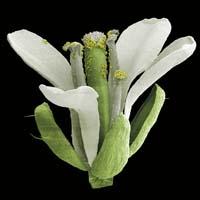Three mutations for clones

French researchers take a step on the road to plant clones
Agronomist engineers have been looking for time to make the next generation of a good plant as good as the previous one. Moreover, from a good plant they would like to get their clones. In fact, the hybrid formed by two species or two crossed varieties has very good characteristics, but the next generation of hybrids is not so good.
Now, researchers at the French Institute of Agricultural Research have taken a step in the path of the next generation having the same characteristics as the previous one. In particular, through three mutations they have managed to create gametes in the plant of Arabidopsis thaliana by mitosis rather than by meiosis. The gametes thus created store all the genetic information of the original, that is, they are clones. Although gametes have twice as many chromosomes, researchers have shown that they are able to germinate and develop the plant.
However, it is not advisable to double the number of chromosomes of plants, so the next objective of the researchers is to develop the plant without fertilization from these gametes, that is, through parthenogenesis.





